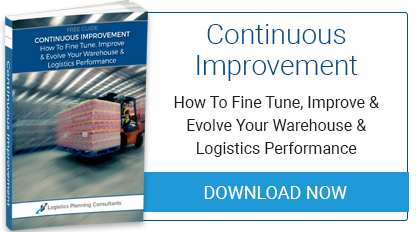
Let’s start with the easy bit – you don’t have to know what equipment and systems you want………..at the start! Though it should be said that it is a good idea to at the end of the process, when you sign a contract. However you should be clear on your objectives. The objectives should focus on your requirements, such as reducing labour, improving productivity, reduction in costs, managing growth, etc. If you have a vision of a brave new world in your warehouse rather than focusing on your objectives you should probably go and lie down until it goes away.
There are two approaches to the successful procurement of an automated system. The first is to partner with a supplier, and the second is to tender your requirements. The essential difference is that with partnering you choose a supplier and then work together to arrive at the solution, with tendering you determine a concept design or a solution and then tender it to select a company to deliver it. This article aims to cover some of the points to consider and some of the pitfalls to be avoided. But remember the more you know – the better your position. If you don’t have experience of automation in house, you should consider bringing in some external support for the project or elements of it.
There needs to be a solution, a preferred system. The solution will be selected from a number of concept designs. The designs will depend on data - data on sales/picking, on storage, on receipts/purchases for a peak and average period. A master data file containing details of each SKU including volumetrics (dimensions) will be essential, as well as projections on growth.
Arriving At The Solution
If you have a chosen partner they will analyse the data and produce a range of concepts which will be narrowed down to a preferred option that means the business objectives and a business case can be made for the investment. There can be an issue with the partnering approach that can conflict with an organisations procurement rules if there is a requirement to obtain multiple quotations before placing an order.
With tendering the companies invited to tender will analyse the data and respond each with their preferred solution. There is a potential issue – suppliers might interpret the tender differently and offer a variety of solutions that are difficult to compare. Asking suppliers to quote against a concept design, as well as offering their own solution, provides a benchmark to assess their responses.
Placing An Order, Signing A Contract
While there will always be a “debate” about price and terms, it is important to remember that the contract will contain the testing procedures and criteria for acceptance and warranties on availability and performance. The contract should be based on an appropriate form of contract designed for mechanical and electrical installations such as MFI, do not go near a building contract such as JCT, it will take much longer to negotiate it and you will regret it afterwards. Remember the legal words are only there to support the schedules. They state what you are going to get, what it will do, and the criteria for acceptance.
Acceptance, Handover And Run Up
In the acceptance process the supplier will demonstrate that the system specified in the contract has been delivered. He will produce a test procedure to demonstrate and prove the performance. The client will take control of the system after handover. It is important that you allocate staff to work alongside the supplier's team in the later stages to achieve the knowledge transfer to make the run up process smoother.
Afterwards
Now you have a shiny new system you have to keep it in working order, which means holding spares and maintaining it. Whether you intend to have your own in house team with training provided by the supplier or to outsource it to the supplier, discuss / negotiate it with the supplier when you undertake the original contract negotiations for the system – it is at the point when your leverage is greatest.


